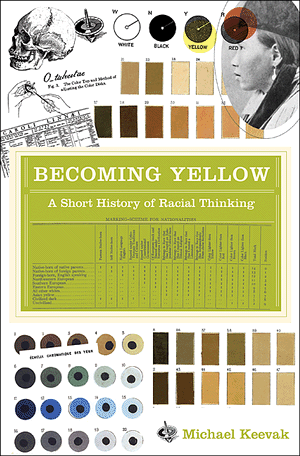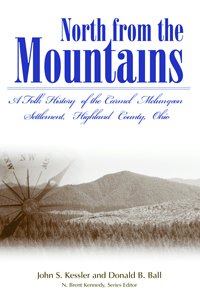Gouldtown: A Very Remarkable Settlement of Ancient DatePosted in Books, History, Media Archive, Monographs on 2011-05-07 22:59Z by Steven |
Gouldtown: A Very Remarkable Settlement of Ancient Date
J. B. Lippincott Company, Philadelphia (Digitized by Google)
1913
237 pages
William Steward, A.M.
Rev. Theophilus G. Stweard, D.D., Chaplain, U.S. Army, Retired
Studies of some sturdy examples of the simple live, toghether with sketches of early colonial history of Cumberland county and Southern New Jersey and some early genealogical records.
CHAPTER I: Gouldtown; its tradition; its people; its general History.
In Judge Lucius Q. C. Elmer’s history of Cumberland County, New Jersey, written in 1865, occurs this statement:
“Gouldtown—partly in the Northern part of Fairfield, and partly in Bridgeton Townships—although never more than a settlement of mulattoes, principally bearing the names of Gould and Pierce, scattered over a considerable territory, is of quite ancient date. The tradition is that they are descendants of Fenwick.”
Judge Elmer, a distinguished Supreme Court Jurist of New Jersey, was the son of General Ebenezer Elmer, of New Jersey, who was an officer in the Revolutionary Army, first as an ensign, and shortly after as lieutenant in a company, and later, being a physician, serving as a surgeon; he served, in all, during the war of the Revolution, a period of seven years and eight months. In 1814, he commanded a brigade of militia called out for the defence of Philadelphia against the British, and was ever after that known as General Elmer. Judge Elmer was born soon after the close of the Revolution in 1798, and had ample opportunity and ability for research in his native county. He died in 1888.
Much interest has always been taken in the community of Gouldtown by the neighboring communities, and this was always of a friendly character; in early times because of its traditional descent, and later because of the ethnological features recognizable.
General Elmer and his son were accustomed, on Sunday afternoons to meet in a schoolhouse and catechize the children of Gouldtown, in the neighborhood, in the years following the Revolution. These children and youth would not all be mulattoes (the term “mulattoes” is used in this book in its general significance, applying to the people of color of mixed blood) however, for in the community were pure white families—as for instance the Woodruff’s, the Luptons, the Fullers, the Seeleys, and the Whites, and others; traces of whom are to be found only in the farms they left, which were known by their names as the “Fuller Fields,” the “hite Fields,” the “Jay Fields “; the names remaining a century or more after their owners had vanished. Only one of these names has been perpetuated in a village, and that of recent date and several miles distant from the original location. This is Woodruffs, about three or four miles northward from Gouldtown. It is a wealthy farming settlement on the line of the Central Railroad, and has a Methodist Church and a schoolhouse and post-office.
Gouldtown is comprised in two sections—following the two family names of Gould and Pierce, which were always known by their separate names, Gouldtown and Piercetown, but both known comprehensively as Gouldtown. It is remarkable in that it has perpetuated its family name in its locality for nearly two hundred years; also because it is a community of mulattoes who, contrary to the pet theory of some astute ethnological scientists, have perpetuated themselves generation after generation for almost two centuries; remarkable, too, for the known longevity of its people, who do not begin to grow old, as is often said, until they come to three-score years, and a number of whom have reached the century mark, one of whom (Ebenezer Pierce Bishop) is still living, at this writing, who is one hundred and six years old, and one of whom (Mrs. Lydia Gould Sheppard) was buried in the year nineteen hundred and eleven, at the age of one hundred and two, in the Gouldtown Cemetery, and a number of others who are still living at ages between seventy and ninety-five years…
Read the entire book here.








